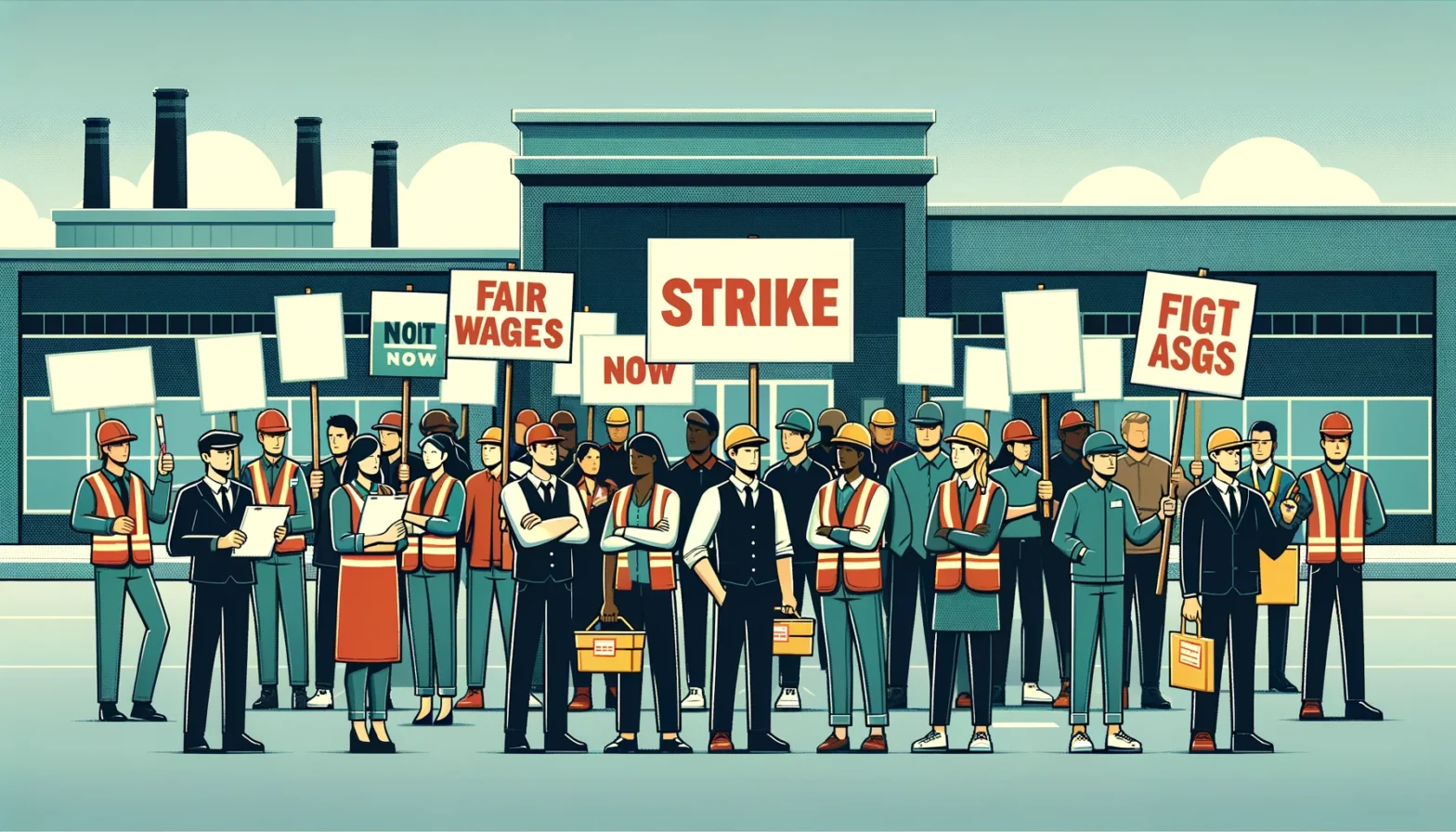From picket lines to front lines: Rebuilding a post-strike workforce
- 6 Min Read
Restorative practices and organizational triage are also integral in addressing the emotional tolls of industrial action and paving the way for reconciliation.
- Author: HRD Connect
- Date published: Feb 19, 2024
- Categories

The year 2023 saw some of the largest and most significant labor disputes in recent decades. For instance, the nearly four-month strike by the Screen Actors Guild-American Federation of Television and Radio Artists (SAG-AFTRA) against major Hollywood production studios was the second-largest labor dispute in the United States in at least three decades.
This strike alone idled 160,000 workers for 82 workdays, resulting in 13,120,000 days idle, a measure used by the Bureau of Labor Statistics (BLS) to describe the impact of work stoppages.
Moreover, 2023 was the most active year overall for major labor disputes in more than two decades, with 30 major stoppages that had begun by the end of November, involving a total of 464,410 workers.
This activity level for major stoppages (defined as those involving 1,000 or more workers and lasting at least one full shift) was the most of any year since 2000. Several of last year’s stoppages were long enough to generate 16.7 million total days idle, more than any year since 2000.
Amid the dust settling from an employee strike, organizations face a critical juncture—rebuilding the team and restoring a harmonious work environment. Strikes, by their very nature, disrupt the status quo, leaving in their wake a need for a comprehensive strategy that addresses the delicate issues of trust, healing, and engagement.
As employees return from the picket lines to their frontline duties, a post-strike rebuilding plan emerges as the essential framework for mending relationships between staff and management and fostering an atmosphere of open communication and mutual respect.
Strategies for Effective Communication and Rebuilding Trust
In the aftermath of an employee strike, organizations are often confronted with the arduous task of bridging communication gaps that have emerged.
As trust is the cornerstone of any successful team, HR professionals must deploy a multifaceted approach to rekindle the sense of trust and open dialogue.
- Establishing Clear and Consistent Communication Channels: Utilizing technology tools and workforce management programs is pivotal in fostering a well-connected environment. These platforms can serve as conduits for timely and empathetic dialogue, ensuring that every voice is heard and valued. It is through these sustained lines of communication that employees can feel more included and in control of their future within the company.
- Fostering Authenticity and Transparency: Post-crisis, it is vital to acknowledge the negative experiences and express a genuine desire to improve. This acknowledgement should be coupled with transparent practices and respect for all stakeholders. By embracing modern crisis management techniques that focus on authenticity rather than spin, organizations can navigate through the delicate process of rebuilding trust. Engaging with employees through direct channels and employee engagement surveys can also provide invaluable insights that help preempt potential industrial action.
- Empowering Managers and Employees: Equipping managers with the tools and training for open dialogue is essential in increasing trust and visibility within the workforce. A clear recovery strategy, informed by exchanges with impacted employees, can guide the organization towards recovery. Additionally, involving employees in the change process can help mend the relationship with leadership, as seen in the rise of employee-led change in the UK.
Moreover, the role of third-party facilitators cannot be overstated in addressing trust issues. By conducting small group listening sessions, these impartial entities can ensure confidentiality and help dissect underlying concerns. Restorative practices and organizational triage are also integral in addressing the emotional tolls of industrial action and paving the way for reconciliation.
Supporting Employee Well-being and Addressing Concerns
In the delicate period following an employee strike, attention to employee well-being is not just compassionate; it’s a strategic imperative. The psychological aftermath of industrial action can ripple through an organization, affecting mental health and productivity.
Recognizing signs of distress early and fostering a culture that prioritizes self-care are pivotal steps in preventing burnout. HR professionals can actively support their teams by:
- Promoting Open Communication: Encouraging honest feedback and dialogue can help identify well-being issues before they escalate. Creating a safe space for employees to voice concerns allows for a more supportive and understanding work environment.
- Mental Health Resources: Providing access to mental health support and services demonstrates an organization’s commitment to its employees’ overall health. This can include counseling services, stress management workshops, and mental health days.
- Work-Life Balance: Encouraging a balance between work and personal life is crucial. Flexible working arrangements can alleviate stress and contribute to a more positive workplace atmosphere.
Leadership’s role in this cannot be overstated. To effectively support employee well-being, leaders must exemplify the behaviors they wish to see. This includes:
- Leading by Example: When leaders actively participate in well-being initiatives and communicate openly, they set a precedent that encourages others to follow suit.
- Regular and Open Communication: Keeping the lines of communication open, especially during times of change, helps to build trust and provides a sense of stability and support.
- Providing Resources and Support: Leaders should ensure that employees are aware of and can easily access available well-being resources.
In the wake of a strike, HR leaders must be especially vigilant in providing emotional support. Critical incident support involves:
- Timely Information Sharing: Keeping employees informed about available mental health services can expedite the healing process. Transparent communication about these resources is essential.
- Encouraging a Listening Culture: Promoting an environment where employees feel heard can significantly impact their ability to cope with post-strike stress.
- Action-Oriented Support: Taking proactive steps to address well-being concerns can mitigate the long-term effects of industrial action. This includes providing time away from work to process experiences and incorporating feedback into future strategies.
To maintain a positive trajectory post-strike, organizations must be proactive, not just in crisis management but also in fostering ongoing employee relations. Pre-strike planning should aim at building trust, while post-strike efforts should focus on acceptance and the courage to embrace change.
The QEII Health Services Centre’s plan serves as a testament to the importance of detailed roles and responsibilities, proactive and reactive measures, and strategic communication post-strike to support staff emotionally.
By integrating these strategies, HR leaders can steer their organizations toward a future where strikes do not leave a lasting scar on employee engagement but instead become a catalyst for a stronger, more resilient workforce.








